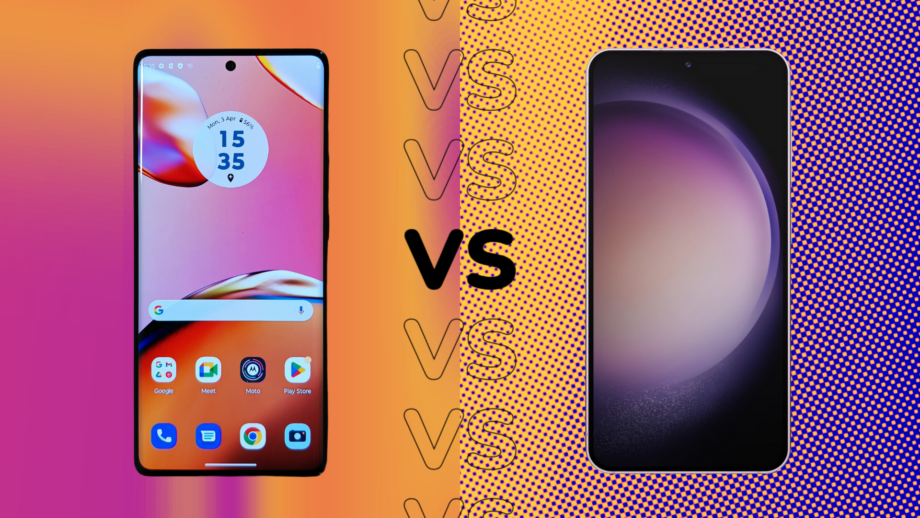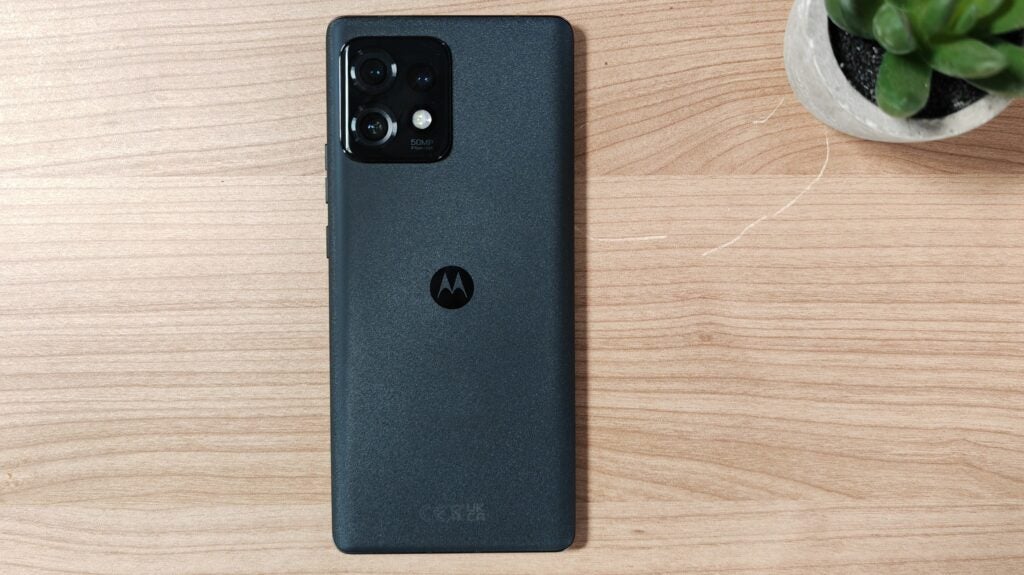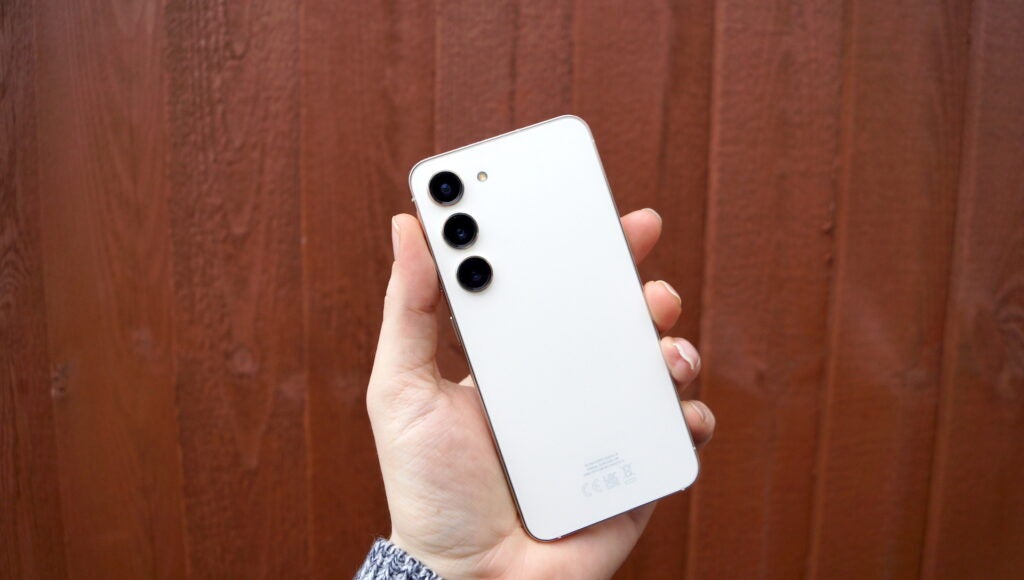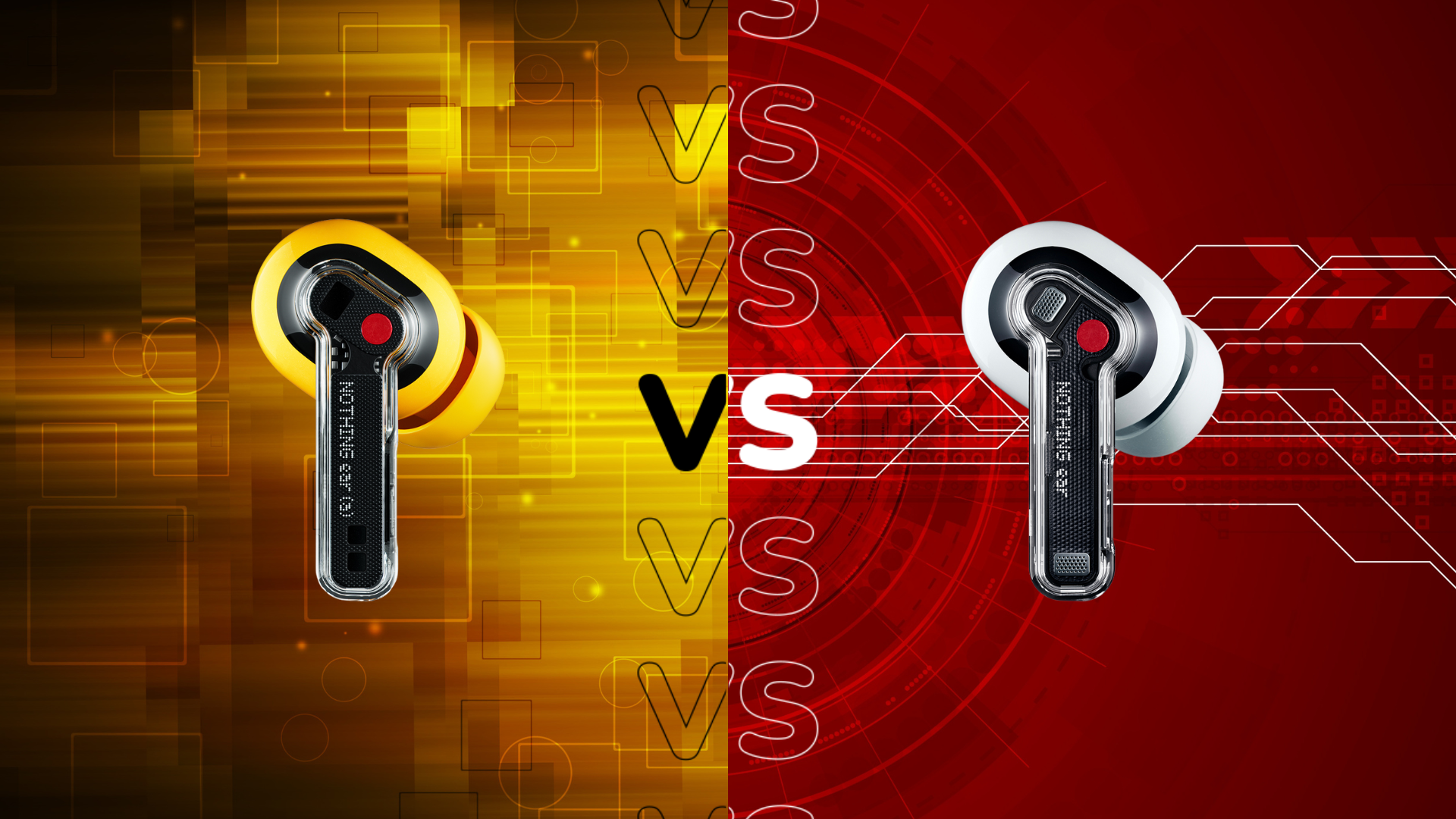Motorola Edge 40 Pro vs Samsung Galaxy S23: How do they compare?

Motorola recently launched the Motorola Edge 40 Pro, but how does the smartphone compare to Samsung’s Galaxy S23?
At first glance, there are quite a few similarities. Both phones are powered by Qualcomm’s latest Snapdragon 8 Gen 2 processor. Both also benefit from large 50-megapixel cameras and productivity features like Motorola Ready For and Samsung DeX.
So, what are the biggest differences between the two phones?
The Motorola Edge 40 Pro has a larger, smoother screen
Not only does the Motorola Edge 40 Pro have a bigger, more spacious screen than the Samsung Galaxy S23, but it should also be smoother thanks to its fast 165Hz refresh rate.
The Edge 40 Pro has a 6.67-inch pOLED display with a resolution of 2400 x 1080, while the Samsung Galaxy S23 has a 6.1-inch Dynamic AMOLED 2X display with a 2340 x 1080 resolution and a (still very speedy) 120Hz refresh rate.
Both phones also have always-on displays, though in the past we’ve found Motorola’s version to be one of the best as you can tap and hold to see notifications at a glance.

The Motorola Edge 40 Pro has a 60-megapixel front camera
The Samsung Galaxy series is known for its impressive camera quality, but Motorola may have just overtaken it in the front camera department with a huge 60-megapixel selfie camera.
The Samsung Galaxy S23, meanwhile, has a 12-megapixel front camera.
When it comes to the rear camera, the Motorola Edge 40 Pro is equipped with a 50-megapixel main sensor, a 50-megapixel ultra-wide angle sensor and a 12-megapixel portrait sensor with 2x zoom, while the Samsung Galaxy S23 takes advantage of a 50-megapixel main sensor, a 12-megapixel ultra-wide angle sensor and a 10-megapixel telephoto sensor with 3x optical zoom. Both phones are capable of capturing 8K video at up to 30fps.
Samsung typically reserves its best camera technology for its top-of-the-line Galaxy S23 Ultra. That being said, we found that the Galaxy S23 offers decent all-around performance, though colours do have a tendency to appear unnaturally vibrant. This is great for boosting the colours in a sunset, for example, but isn’t necessarily a realistic representation of the colours you’d see in real life.
You’ll have to wait for our full review of the Edge 40 Pro for our verdict on how Motorola’s camera performs beyond its spec sheet.
The Samsung Galaxy S23 runs Samsung’s One UI
Both the Samsung Galaxy S23 and the Motorola Edge 40 Pro run Google’s Android 13 operating system, but the Galaxy S23 features Samsung’s One UI.
This means that the phone is integrated into Samsung’s ecosystem, enabling Samsung-exclusive features and making the experience seamless for those already using the company’s products, such as the Galaxy Watch 5 or the Galaxy Tab S8 Ultra.

The Motorola Edge 40 Pro has 125W charging
The Motorola Edge 40 Pro packs a larger battery and supports faster charging.
The Edge 40 Pro has a 4600 mAh battery and supports incredibly fast 125W TurboPower charging. According to Motorola, the phone can go from 0 to 100% in 23 minutes and a full charge will last you around 30 hours, though this is something we’d want to test ourselves when we get the chance.
The Samsung Galaxy S23, meanwhile, has a 3900 mAh battery with 25W fast charging. We found that the phone easily lasted a full day on a single charge, but fast charging was a little disappointing as it took us an hour and 20 minutes to reach 100%.
Both phones also come with 15W wireless charging and the Galaxy S23 has 4.5W reverse wireless charging, while the Edge 40 Pro comes with 5W wireless power sharing.








